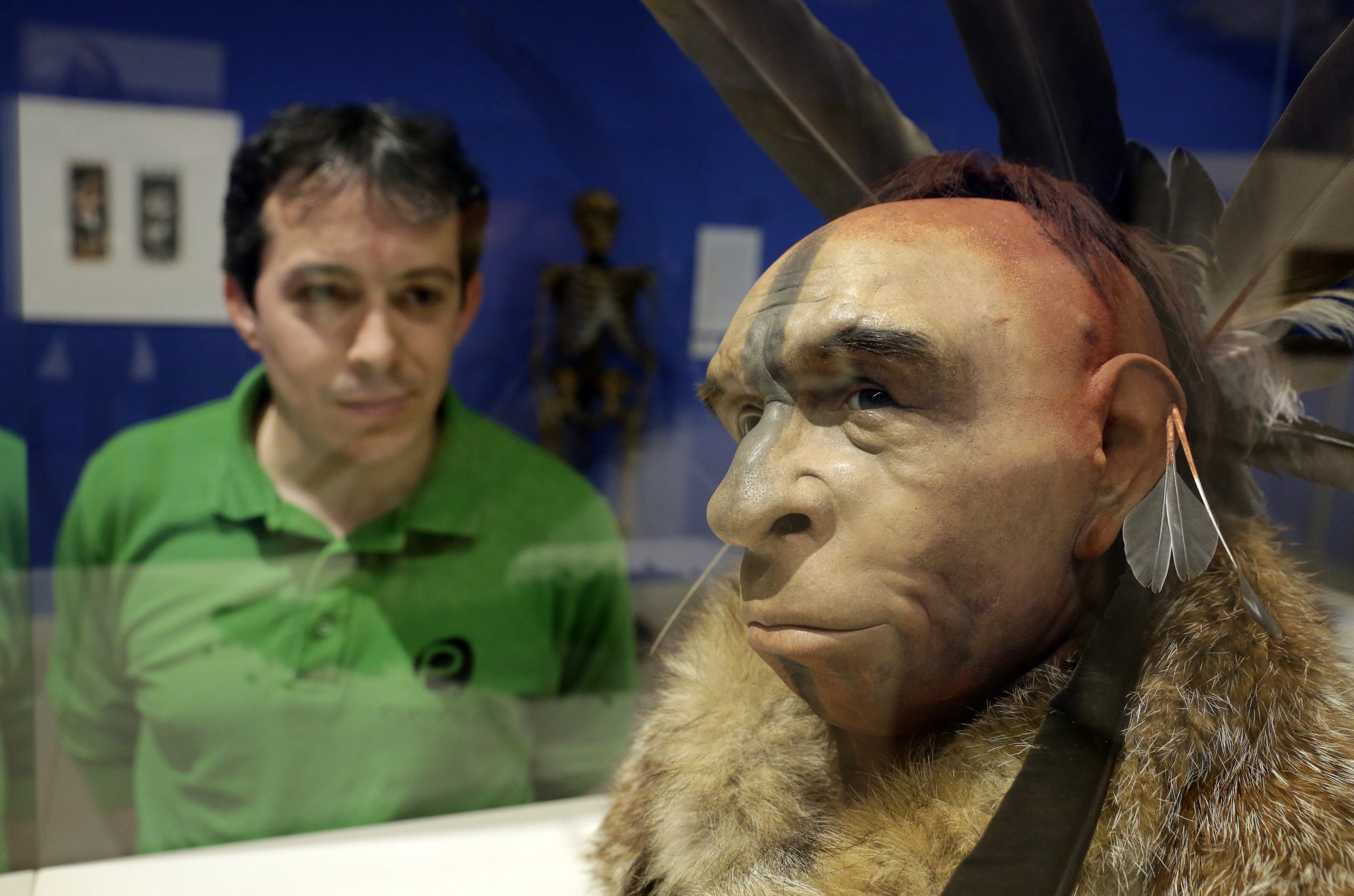Around 50,000 years ago, a bunch of Neanderthals made a home — and a bathroom — out of what is now a rocky escarpment south of Valencia, Spain. Over the last few years, some of those paleo-poops, the oldest known to come from a human species, have been excavated and analysed. Now, researchers have caught a glimpse of the ecosystems that existed in the guts of those early hominins, from a faecal deposit in the remnants of a fire pit on the site.
Over 200 bacterial microorganisms were extracted from the ancient poop by an interdisciplinary team of archaeologists, microbiologists, and anthropologists. The researchers found a striking amount of consistency between the microbial residents of the Neanderthal gut and the sort of microbes that populate the guts of modern humans. That consistency shows many minuscule denizens of our insides are actually longstanding residents, living in us for hundreds of thousands of years, and have coevolved with the hominins they inhabit. The research was published in the Nature journal Communications Biology.
According to Marco Candela, a microbiologist at the University of Bologna and co-author of the paper, the team wanted “to see which microbiomes are coevolving with the Homo lineage in evolutionary time.” To do this, they looked for microbes that contemporary humans might share with Neanderthals.
Having an early reconstruction of a human gut is useful in contextualising what our microbiomes look like today; researchers want to know which bacteria have remained with us and which have disappeared entirely from our internal ecosystems. Microorganisms with substantial staying power in the guts of mammals were termed “old friends” in the mid-2000s, and their co-evolution with us has been linked to the ways humans have lived for hundreds of thousands of years.

The oldest gut microbiome data for humans is about 8,000 years old — it doesn’t even precede the last ice age, which ended about 11,000 years ago. That has left researchers in the lurch when it comes to understanding the insides of our early ancestors. The Neanderthal poop pushes the chronology back some 40,000 years — shortly before Neanderthals as we know them disappear from the evolutionary record.
“The point is that we identified some microorganisms that are shared between modern humans and Neanderthals,” Candela said. “This means that these microorganisms populate the gut of the human lineage before the segregation of the Neanderthal and sapiens lineages.”
[referenced id=”1668737″ url=”https://gizmodo.com.au/2021/02/more-evidence-that-neanderthals-were-absorbed-by-humans-not-wiped-out/” thumb=”https://gizmodo.com.au/wp-content/uploads/2021/02/02/q1yzb1hg0oexvzlo7uq1-300×155.jpg” title=”More Evidence That Neanderthals Were ‘Absorbed’ by Humans, Not Wiped Out” excerpt=”Prehistoric teeth found over 100 years ago are some of the best evidence yet for hybridised communities of Neanderthals and modern humans.”]
An important find in the Neanderthal poop was the inclusion of short-chain fatty acid-producing bacteria, many of which allow humans to eke out extra energy from dietary fibre, and one of which the researchers suggest may have provided health benefits to ancient mothers and their children. But just as good microbes hitchhiked through time in our guts, so too did the hell-raisers — the researchers also found bacterial pathogens in the faeces that remain around today, causing oral and dental diseases in modern humans.
According to Candela, the microbiomes of populations that live in traditional, rural ways, like the Hazda, a group of hunter-gatherers in northern Tanzania, tend to have guts that are more alike. On the other side are humans who inhabit urban environments, which isolate our guts and make our bacterial residents less similar from person to person. The paper describes a wholesale loss in bacterial diversity in the modern human gut and a situation in which each of our guts aren’t talking to one another like they did in our evolutionary past. “Each of us is like an island,” Candela said.
[referenced id=”1061045″ url=”https://gizmodo.com.au/2017/08/what-present-day-hunter-gatherers-can-tell-us-about-the-bacteria-in-our-gut/” thumb=”https://gizmodo.com.au/wp-content/uploads/2017/08/25/nvmlfyb683adydg1ngyh-300×169.jpg” title=”What Present-Day Hunter-Gatherers Can Tell Us About The Bacteria In Our Gut” excerpt=”The Hazda is a small group of hunter-gatherers living in the central Rift Valley of Tanzania, one of the few remaining groups of people left in the world who still collect the majority of their diet through foraged foods. Modernity has still managed to touch their lives, of course, but…”]
Often, the human evolutionary path is framed heroically — out of many early humans, ours was the one to succeed. But as the Neanderthal microbiome shows, we were hardly alone for that journey. Plenty of micro-organisms had the same path.
“Based on these results, we can anticipate the symbiotic time-depth between humans and some co-resident microbes to be at least one million years,” wrote co-author Stephanie Schnorr in a Nature blog on the research. “This implies a fixed physiological relationship that is linked to normal development and health in longevity across both humans and Neanderthals as an ancient legacy.”
Hopefully, more faeces will be studied in the future, so we can further unpack the guts that have made us who we are. For now, we can be grateful that the findings aren’t crap.
